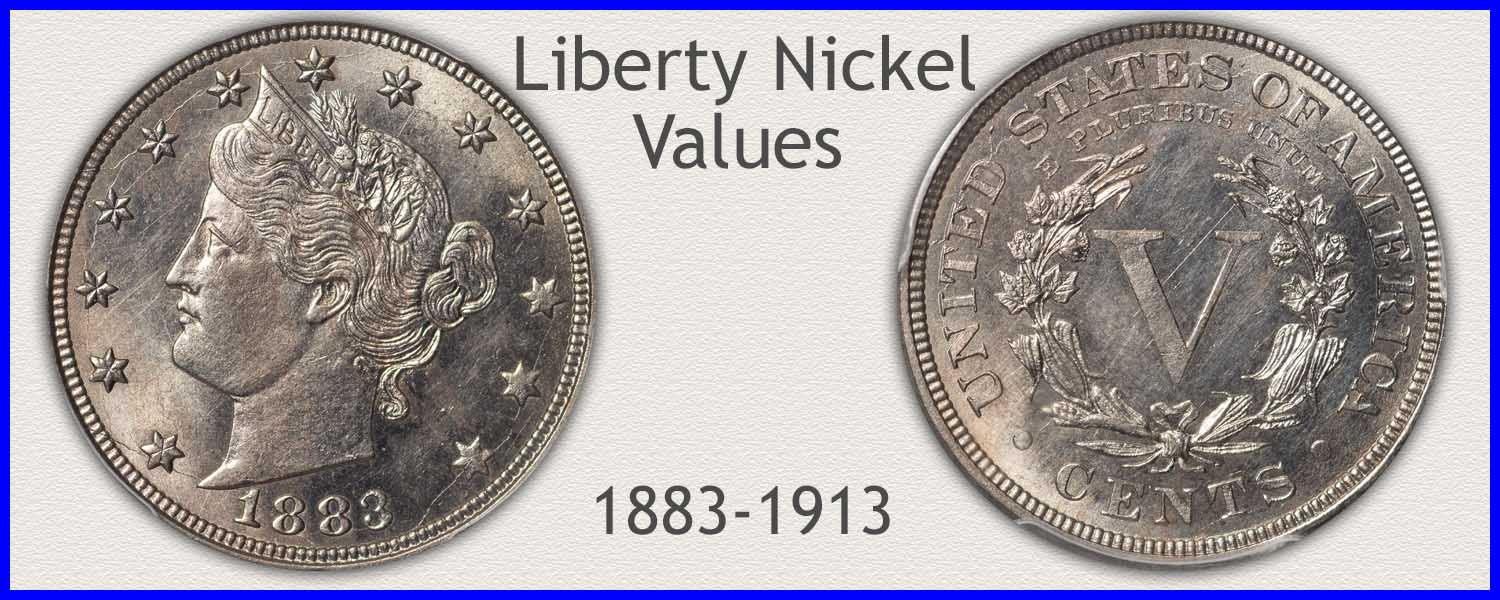Coin Values Moving with Precious Metals: Up-Dated 4/14/2025: Gold $3226 | Silver $31.88
1893 Nickel Value
Condition of these nickels is carefully examined to determine 1893 nickel value. Despite being abundant in the coin market, they do not appear often in high quality. Its "grade" of condition, a hobby term, determines how much it is worth and its place on the chart.
To recognize the true value potential of this older Liberty series nickel, follow the steps outlined below. Identify your coin accurately by comparing it to images and referencing the in-depth descriptions.
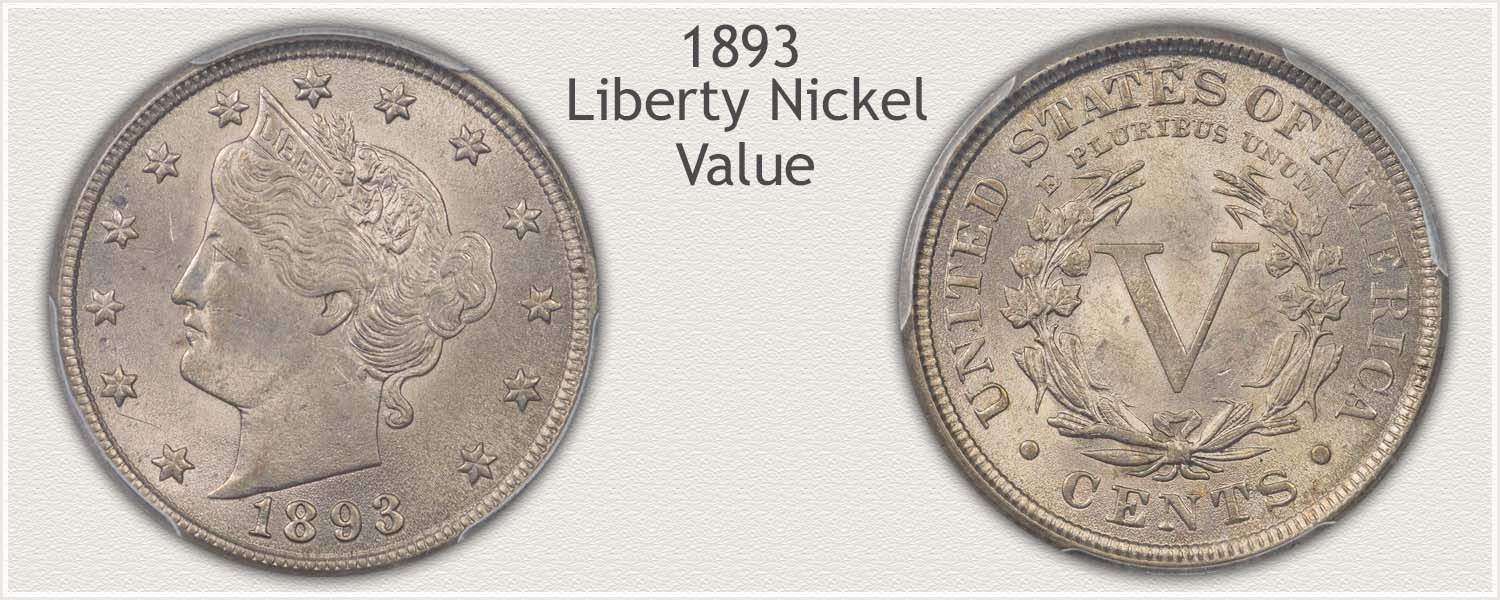
Steps Leading to Value:
- Step 1: Date Identified - A second, close examination of the date is done to ensure its accuracy.
- Step 2: Grading Condition - When compared to images, the surface condition's quality determines its position on the value chart.
- Step 3: Special Qualities - A careful study of small details helps identify high quality.
| 1893 Nickel Value | ||||
|---|---|---|---|---|
| Condition of Coin | ||||
| Date | Good | Fine | Extremely Fine |
Mint State |
| Liberty Nickel Value Updated | 2024 | |||
| 1893 | $4.77 | $20 | $38 | $80 |
Wholesale values are listed on the chart. Use the chart as a guide. Demand, and dealer needs influence up or down these values into a range.
Step 1: The Coin Market Depends on Accurate Reading of a Coin's Date
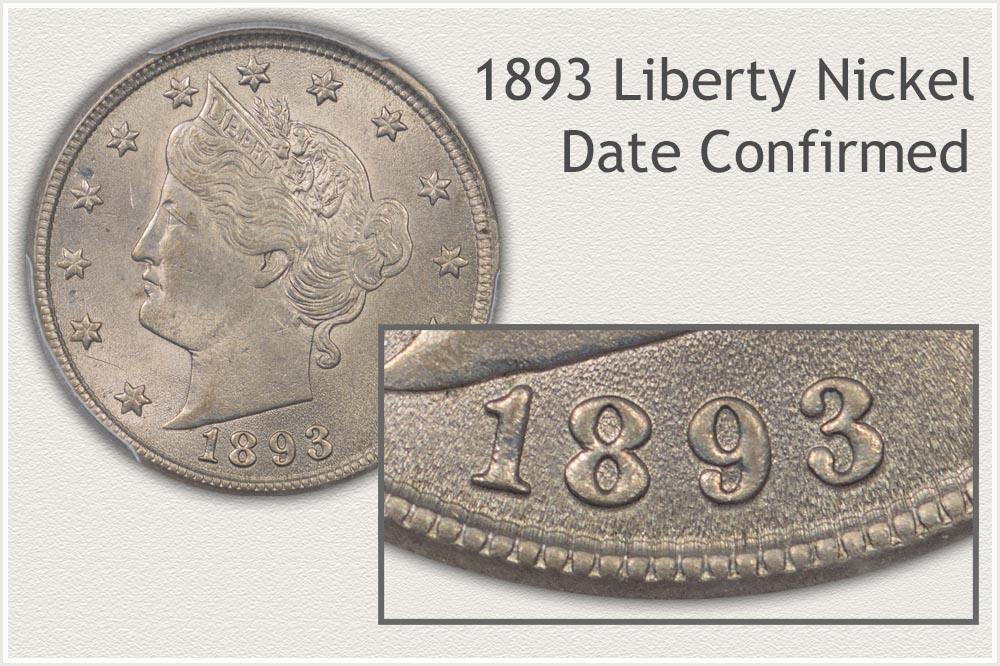
A key factor to identify with any coin value assessment is recording the date. Liberty series nickels have a wide range of values, each depending on the date of issue as first in importance. 1893 nickels are significant as a premium value year among the series. Many levels of collectors seek these in all states of condition.
Before the coin market judges condition of coins, an accurate reading of the date is confirmed.
Step 2: | Condition is Judged and a Grade Determined
Features to Identify and Narrow 1893 Nickel Value
The condition of old nickels varies greatly; heavy wear is the norm. As more original details become visible, a large improvement in visual appeal and premiums is realized. A grading method of first comparing to "Grading" images, representing stages of wear, separates the heavy, moderate, and light wear coins. This condition now becomes a grade, a defining term used within the coin market as part of a description of coins.
Viewing the grading images below and finding a close match begins the grading process. Improvements in condition are noted when identifying important details remaining as described in the definitions of a particular grade. A single light source is important, especially when judging very worn coins. Strong lighting provides contrast to faded features with little definition.
Mint State Grade
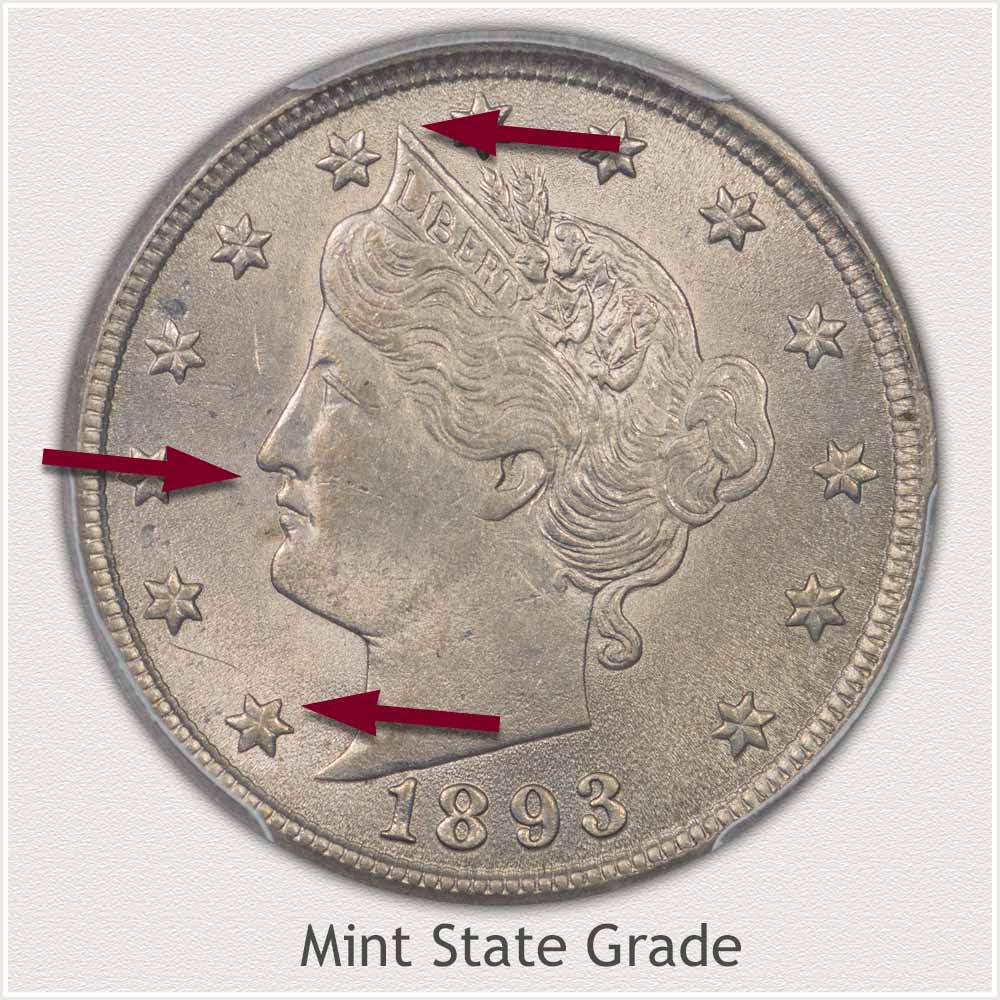
Mint State: When judging a nickel's Mint State condition, it is helpful to use a single light to view the coin's overall appearance. Wear-free surfaces are the definition and deciding factor of this superior quality category. Verifying the original surface texture and luster remain intact is the first step in detecting the absence of wear.
The main focal points to examine are Liberty's headband, and her cheek. These highly contoured areas feature both high relief and open space. Mint State condition requires both surfaces to show complete coverage of luster remains. The top edge of her headband is not smooth due to wear, and her cheek displays the original texture, causing luster to shine. Signs of wear, if any, include a smooth surface, a reduction in the height of the top edges of designs, and a change in color on the surface of the nickel. Although a slight color change does not always indicate wear, toning is possible on these areas as well. It is important to see the original texture on the surface. In protected, low areas, this fine texture on the metal is compared to the higher profile areas to confirm a match.
Secondly, there is no smoothness to the small details of the stars, helping in recognizing the absence of wear. Importantly examine the fully formed stars, as weakness in impressing the design is common on some Liberty nickels. A mint condition Liberty nickel is one with full contours and intact luster.
Extremely Fine Grade
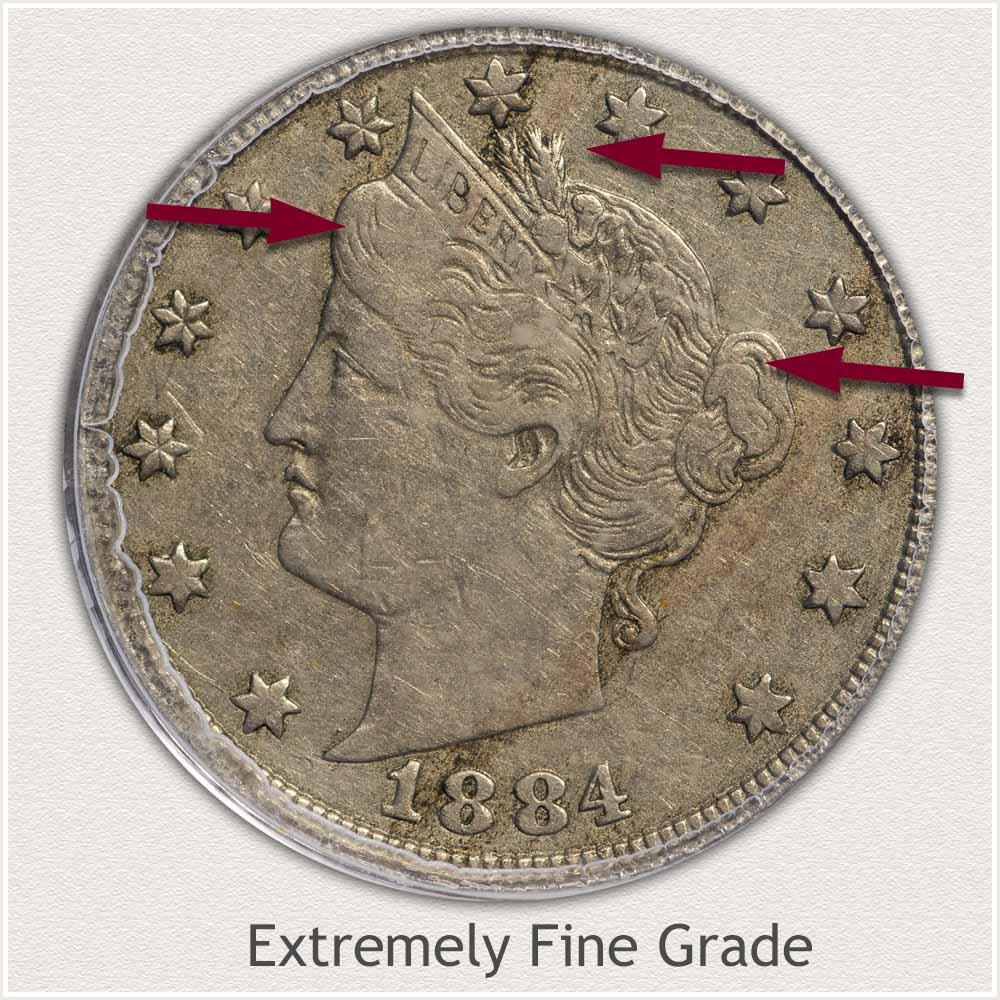
Extremely Fine: Wear creating small flattened areas only on the highest design elements is an Extremely Fine grade nickel. Slightly worn, the condition remains sharply detailed, with the only area of noticeable flatness located directly above Liberty's forehead. The color of the surface is now a muted silver-gray, replacing the brilliance of luster.
A slight flattening of high areas and design loss are visible in the wheat grains and cotton bolls above the headband. In addition, there is a small area of missing hair strand detail in the hair bun. Her cheek and neck have clearly defined contours, giving the coin a bold appearance.
Most of the surface has only mild wear, just removing the delicate luster. The field in front of Liberty, which is in a protected area, shows only slight signs of wear and minor smoothing.
Fine Grade
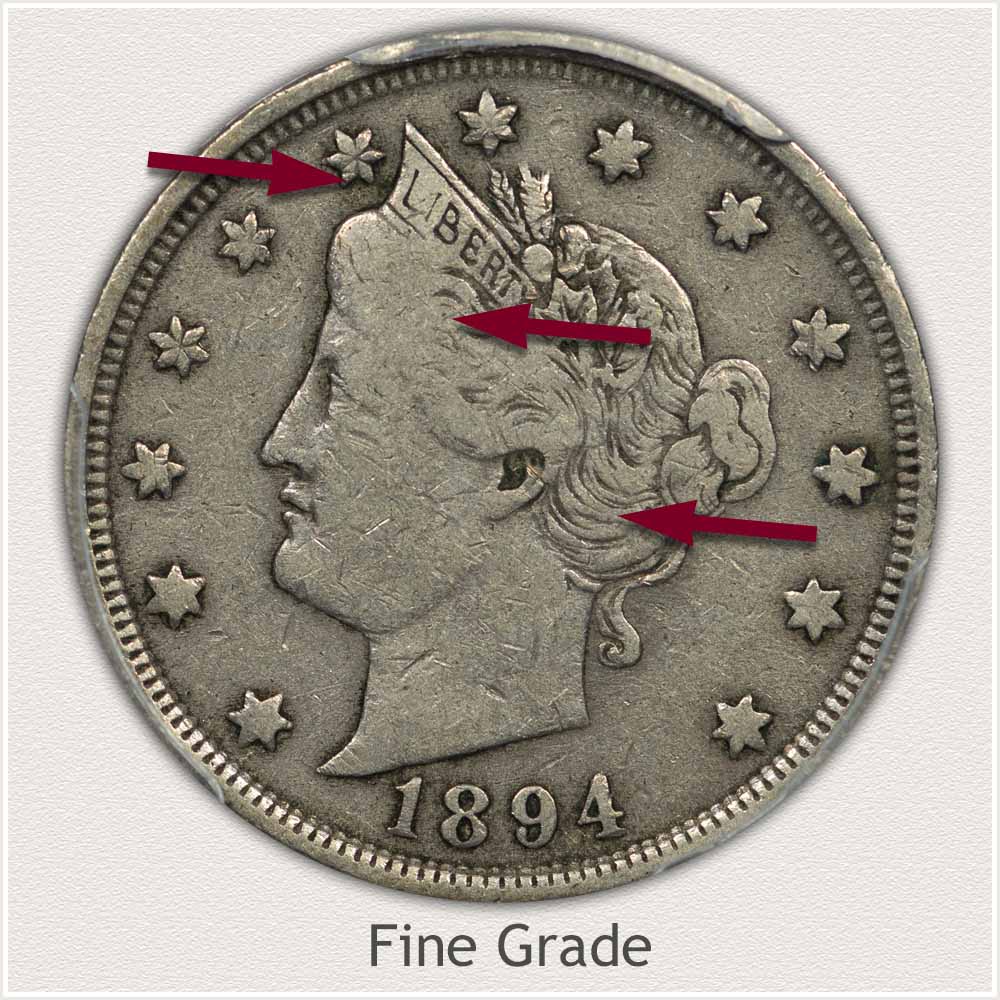
Fine Grade: Fine condition is represented by a coin with a pleasing appearance. Moderate amounts of wear are balanced by the strong, finer details remaining. This grade is defined in part by its level of moderate wear. Although a few characteristics are required to make the grade, this 1893 nickel is still reasonably priced.
A starting point for judging a Liberty nickel's condition is the lettering LIBERTY on the headband. To reach market acceptance, all letters in the headband remain readable. Since the "I" is situated at one of the highest points in the design, a certain degree of faintness is expected. The grade is limited by the amount of smoothness on the metal below the headband. This smooth, lack of hair detail, indicates a moderate wear rating.
Details in the hair waves behind her ear with small but distinct lines increase visual appeal. A pleasing Fine grade Liberty nickel is confirmed by the level of detail in the wreath, wheat grains, and cotton leaves.
Good Grade
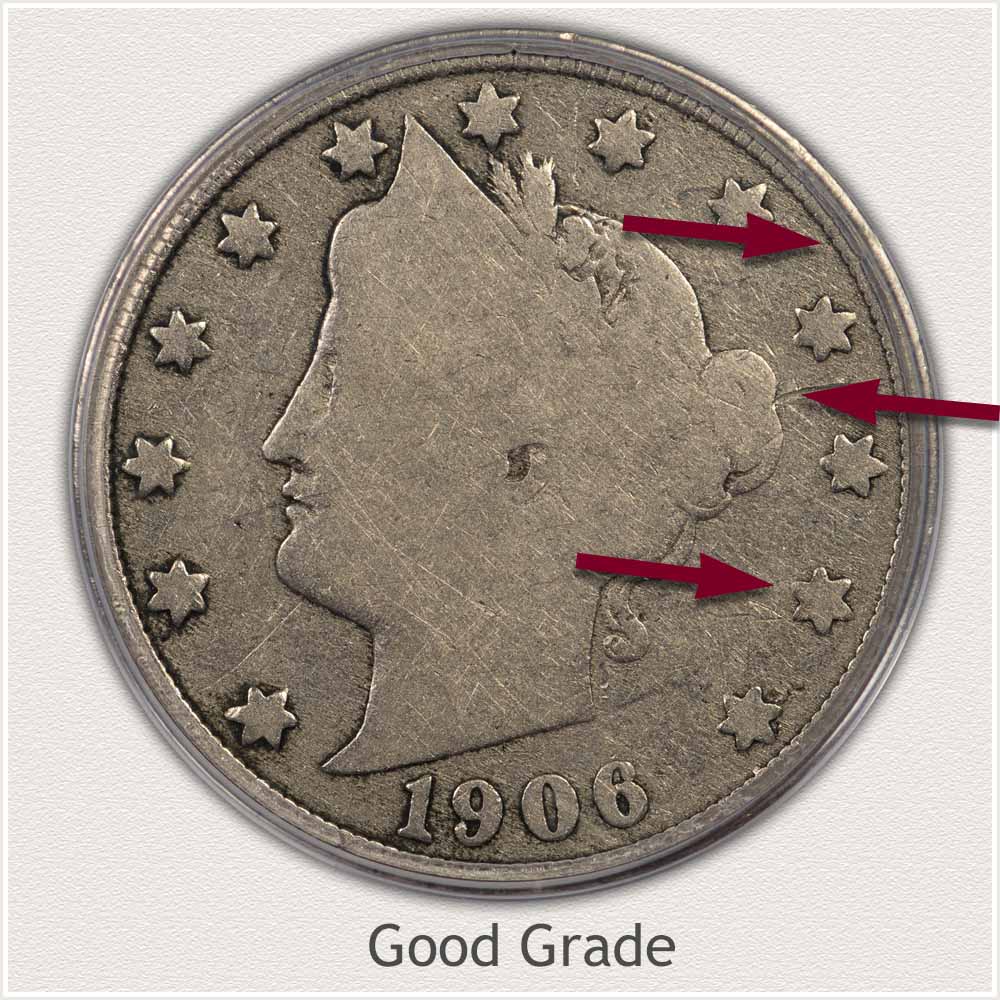
Good Grade: The majority of Liberty's features are lost on the example, which is a result of significant wear. The coin's complete outline of Liberty is still visible. Although most minor design features are now missing, defining the Good grade. A Liberty nickel is required to have a complete outline of the portrait in order to grade in the Good range.
Now, aesthetics begins to play a large role in appeal and value. These coins have a worn appearance and a flattened design. However, they avoid a "worn-out" look due to the completeness of the inner rim. Notice all 13 stars, and a full outline of Liberty remain. The image points to the star likely to show the most wear. Despite its worn appearance, a good grade Liberty nickel retains a positive appeal. An additional benefit to the eye appeal of the nickel is the lack of noticeable dents on the outer edge.
How to Video: Grading Liberty Nickels
With a focus on the subtle features needed to recognize higher quality, review both the video, and additional close-up images. Added experience in the examination process improves the eye's ability to spot key elements of the design.
Grading Liberty Nickels | How to Video and Descriptions
Step 3: | Special Qualities | Identifying the Quality Collectible Condition
Subtle Remaining Detail Confirms a Quality Coin in Demand
1893 nickels have a rising value profile when a small degree of detail become visible. remains. Appeal to collectors and the coin market follows this improved quality. Considered a common coin when only parts of major features remain, a close look at condition has great potential. Liberty nickels are known to wear in typical patterns. Identifying light to moderate wear on a Liberty nickel, meets two specific requirements. First and most important, is the ability to read "Liberty" across her headband. Secondly, as a confirmation, detect a separation defining the hair line and forehead.
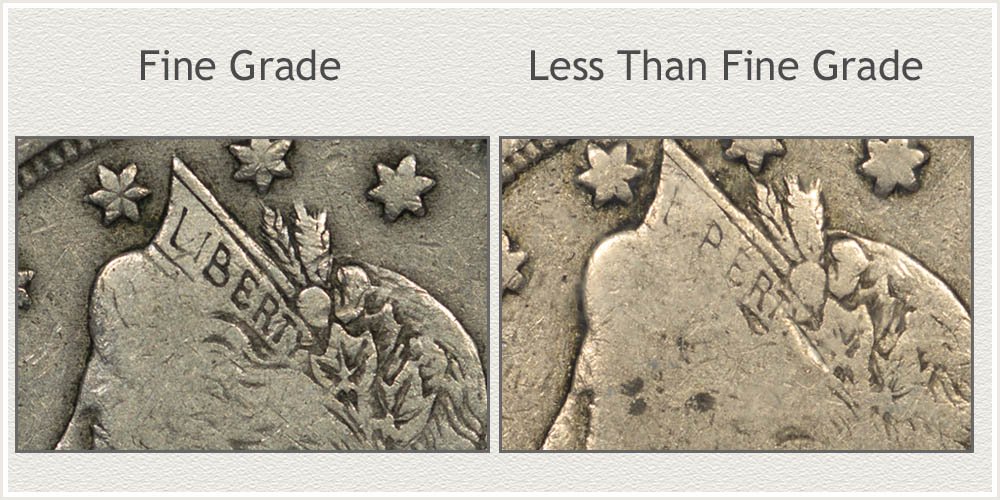 Details of Grading Liberty Nickels in Fine Grade
Details of Grading Liberty Nickels in Fine Grade
When viewing both nickels in the image, the similarity is close. Both show hair detail, leaves and wheat grains, and a strong eye and ear. Lettering within the head band is found in both, and in both, the lettering is worn and faded. The key difference raising the Fine grade over the other is the full presence of the letter "I" within the headband. A very small area of improved quality is significant for the grade and market demand. The coin on the right is missing the "I" entirely, and once highlighted, it becomes readily visible. The coin graded Fine, displays the "I" as complete, although faded compared to other letters.
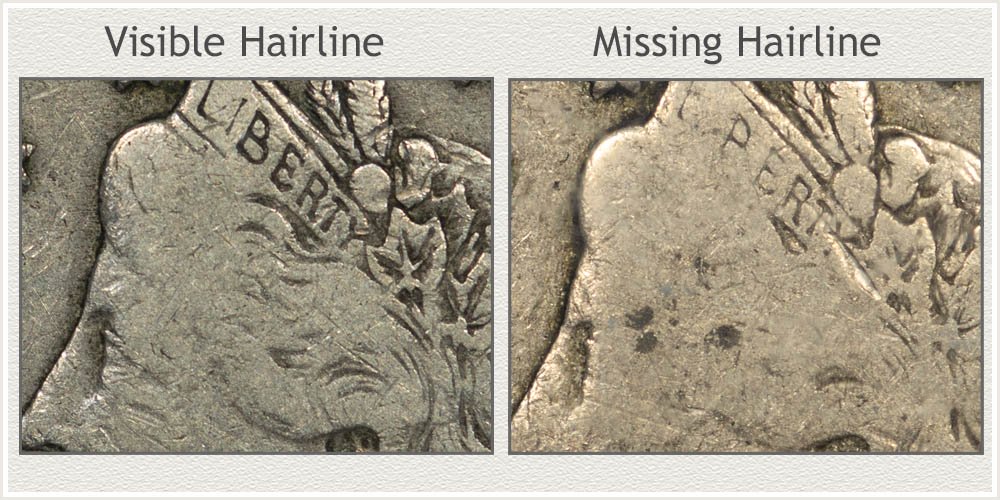 Inspecting Hairline Details to Determine Fine Grade
Inspecting Hairline Details to Determine Fine Grade
To confirm a distinction between the two conditions, look for a subtle and faint feature. Within the original design, the headband sits on waves of hair, with a distinct lower edge. A nice separation remains between the hair and headband.
Just visible on the Fine graded example, this hairline/forehead feature is well worn. However, the coin shows a subtle line does remain. Follow the line from the ear, above the eye, and complete to the front of Liberty's head. Notice on the left-hand example the hairline starts at the ear, fades in the eye area, and appears again at the front of her head. This additional wear and slight removal of metal are enough to lower the overall quality.
Presence of two features, complete lettering, and separation line, confirms a higher quality.
References
U.S. Mint. 1894 U.S. Mint Annual Report
https://nnp.wustl.edu/library/publisherdetail/51
U.S. Mint. Catalogue of Coins of the United States.
https://nnp.wustl.edu/library/book/554591
Coin Values | CoinStudy Articles
Date by Date
In Depth Liberty Nickel Values
1883 to 1912
The Value of V Nickels | A Series with a Wide Range in Rarity
Popularity of the Liberty design nickels is steady to growing. Value chart listing all dates and mints shows the demand for scarce issues and grades. Early years are rising in values, especially in higher collectible condition.
Safe Coin Storage | Housing Liberty Nickel for the Long Term
Separating coins from each other avoids continued abrasions. Add protection from humidity provides the solution to storing these valuable Liberty nickels. Suitable products, specific to coins are highlighted.
Coin Value Guide | How to Value a Coin Collection
An outlined method followed, improves accuracy, efficiency and confidence in placing a value on an old-time collection of coins.
★Coin Values Discovery finds 1893 Nickel Value and...
Charts covering Coin Values. The complete index page starts a step-by-step method introduced and followed to determine how much a box of old coins is worth. Using images along with descriptions identify the various coin series and begin the next steps.
